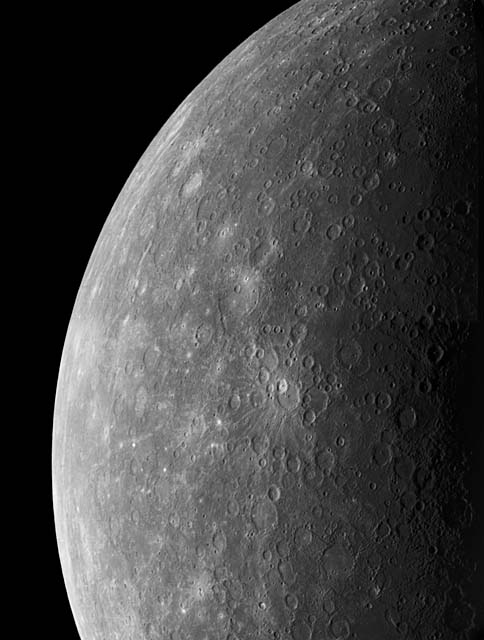Mercury


Mercury is only about one-third the size of the Earth. It is smaller than any other planet except Pluto. Mercury is very close to the Sun and has no substantial atmosphere. These factors contribute to the fact that the surface of Mercury has the greatest temperature range of any planet or natural satellite in our solar system. The surface temperature on the side of Mercury closest to the Sun reaches 427 degrees Celsius, a temperature hot enough to melt tin. On the side facing away from the Sun, or the night side, the temperature drops to -183 degrees Celsius. Scientists have detected a magnetic field surrounding Mercury, though it is not as strong as the field around the Earth. Scientists theorize that Mercury's field is due to an iron-bearing core or possibly to the solar winds. Mercury's atmosphere is very thin and is composed of helium and sodium. The surface of Mercury has been shaped by three processes: impact cratering where large objects struck the surface resulting in crater formation, volcanism where lava flooded the surface, and tectonic activity where the planet's crust moved in order to adjust to the planetary cooling and contracting. Mercury does not have any naturally occurring satellites.


Back to
The Planets
Back to
Astronomy
Created by [
Jivo]
| Show these comments on your site |
 Stumble!
Stumble!


